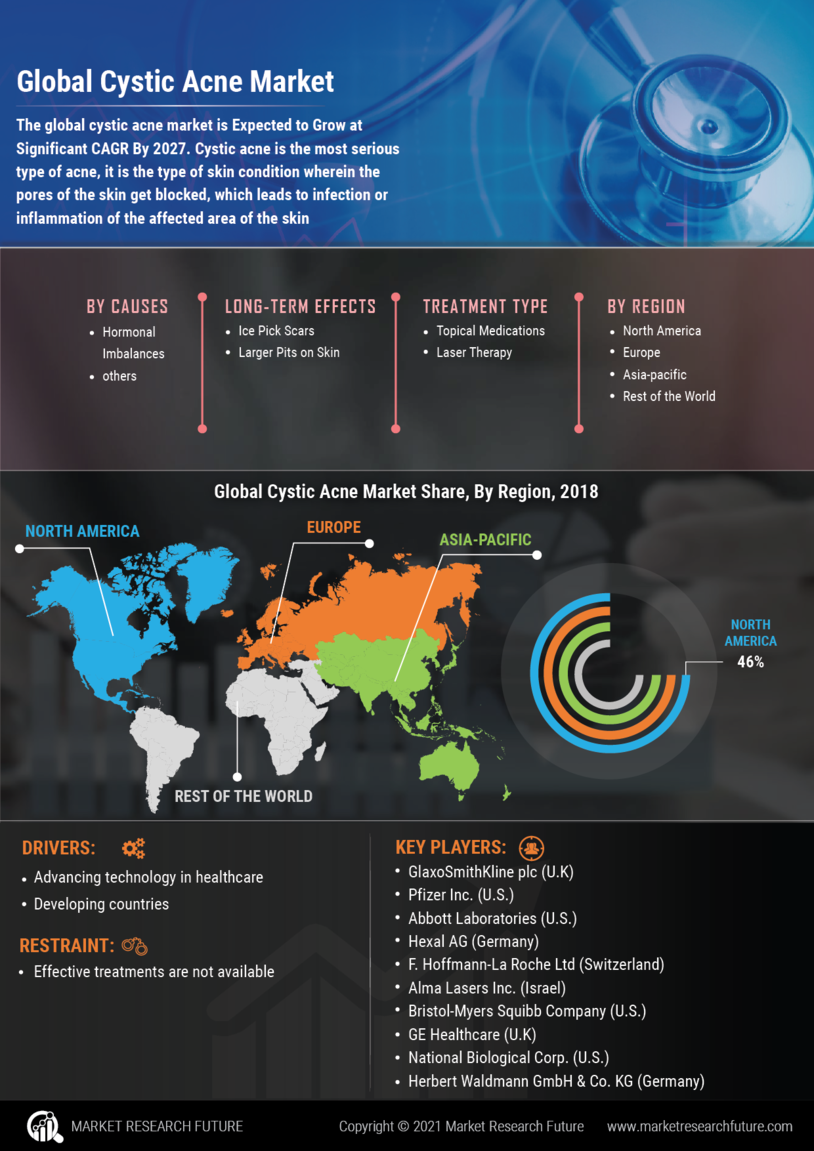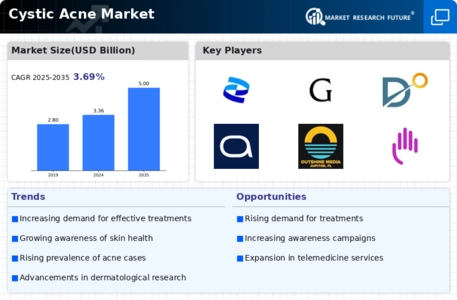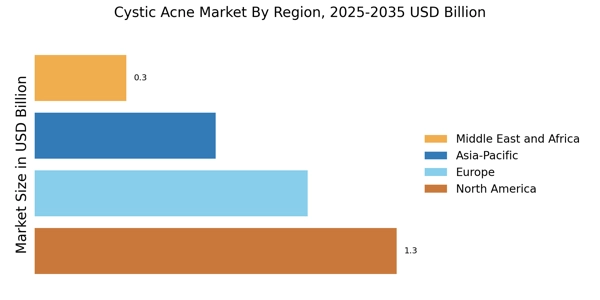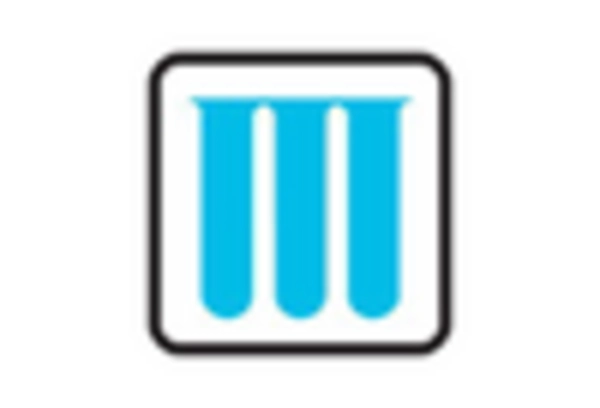Advancements in Treatment Modalities
Innovations in treatment modalities are transforming the Cystic Acne Market. Recent advancements in pharmaceuticals, such as biologics and novel oral medications, have shown promising results in managing cystic acne. For instance, the introduction of medications targeting specific inflammatory pathways has led to improved patient outcomes. Additionally, the integration of laser therapies and light-based treatments is gaining traction, offering alternative solutions for patients who are resistant to conventional therapies. These advancements not only enhance treatment efficacy but also expand the range of options available to patients, thereby stimulating market growth. The Cystic Acne Market is likely to continue evolving as research and development efforts yield new therapeutic agents.
Increasing Prevalence of Cystic Acne
The rising incidence of cystic acne is a pivotal driver in the Cystic Acne Market. Studies indicate that approximately 20% of adolescents and young adults experience this severe form of acne, which can lead to significant psychological distress and social anxiety. This growing prevalence is likely to escalate demand for effective treatment options, thereby propelling market growth. Furthermore, the increasing awareness of skin health and the psychological impacts of cystic acne are prompting individuals to seek dermatological consultations. As a result, the Cystic Acne Market is witnessing a surge in product development aimed at addressing the needs of this demographic, including topical treatments and systemic therapies.
Growing Demand for Over-the-Counter Products
The increasing consumer preference for over-the-counter (OTC) products is significantly influencing the Cystic Acne Market. Many individuals are opting for accessible and convenient treatment options that do not require a prescription. This trend is supported by the proliferation of skincare brands that offer specialized formulations targeting cystic acne. Market data suggests that the OTC segment is expected to witness substantial growth, driven by the rising awareness of skin health and the desire for self-treatment. As consumers become more informed about ingredients and their effects, the demand for effective OTC solutions is likely to rise, further propelling the Cystic Acne Market.
Impact of Social Media and Influencer Marketing
The role of social media and influencer marketing is becoming increasingly prominent in the Cystic Acne Market. Platforms such as Instagram and TikTok are inundated with content related to skincare, where influencers share personal experiences and product recommendations. This trend has led to heightened awareness and interest in cystic acne treatments among younger demographics. As consumers turn to social media for guidance, brands are leveraging these platforms to promote their products, resulting in increased visibility and sales. The influence of social media is likely to continue shaping consumer behavior, thereby driving growth in the Cystic Acne Market as more individuals seek solutions for their skin concerns.
Rising Awareness of Mental Health and Skin Conditions
The growing recognition of the connection between mental health and skin conditions is a crucial driver in the Cystic Acne Market. Research indicates that individuals suffering from cystic acne often experience heightened levels of anxiety and depression, leading to a greater emphasis on seeking effective treatments. This awareness is prompting healthcare providers to adopt a more holistic approach to treatment, considering both physical and psychological aspects. Consequently, the demand for comprehensive treatment plans that address these interconnected issues is likely to rise. As mental health continues to gain prominence in discussions surrounding skin conditions, the Cystic Acne Market is expected to expand to meet the evolving needs of patients.


















Leave a Comment